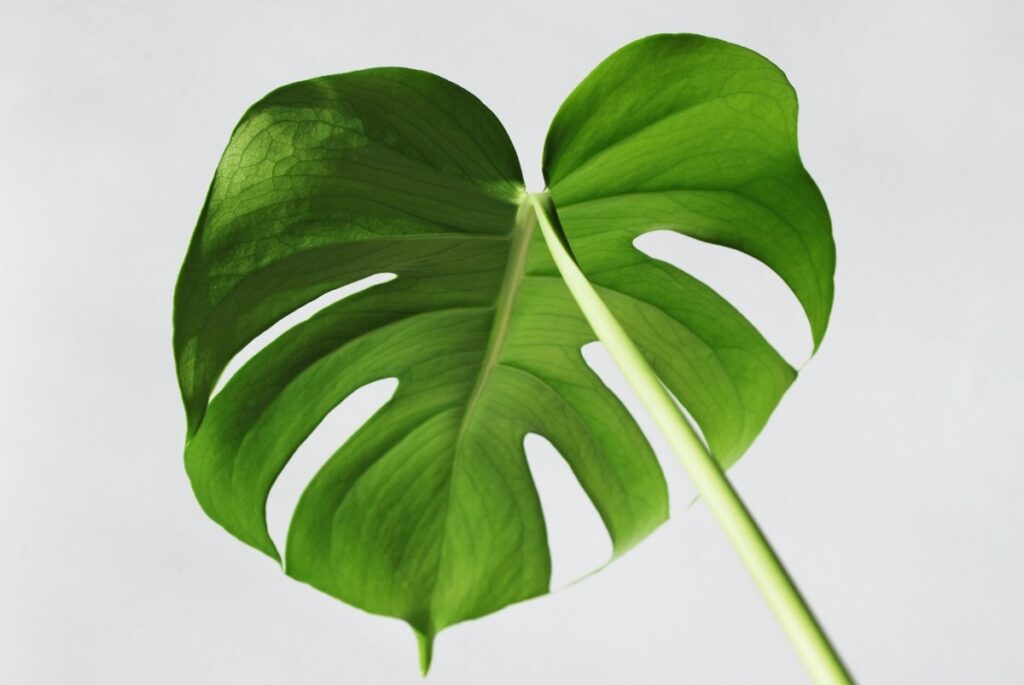Introduction to Monstera Propagation
Monstera Deliciosa, also known as the Swiss cheese plant, is an incredibly fascinating and captivating houseplant that has captured the hearts of plant enthusiasts worldwide. Its large, glossy leaves and unique leaf patterns make it a true showstopper in any indoor space. But what makes Monstera even more exciting is its ability to be propagated, allowing plant lovers to create new plants and expand their greenery collection. Beyond their beauty, Monstera plants are also incredibly hardy and forgiving to new plant parents, making them incredibly popular for new growers and experts alike. They are so popular that many people try to propagate Monstera into new cuttings without nodes.
Propagation, the art of creating new plants from existing ones, is a thrilling endeavor that brings joy and satisfaction to any plant enthusiast. And to propagate a Monstera, an understanding of nodes, leaves and growth time is needed.
Can I propagate Monstera Plants without Nodes?
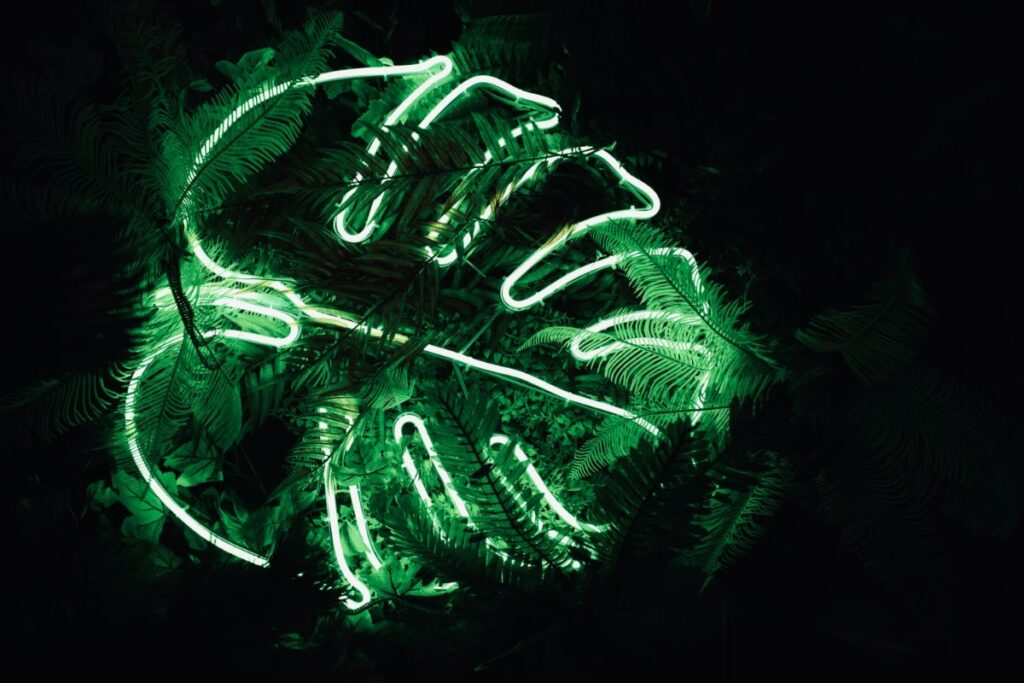
Here’s where things get interesting. A burning question often arises among Monstera enthusiasts: Can you propagate a Monstera without nodes? It’s a valid concern, especially if you find yourself without any nodes readily available. Fear not, for we are about to embark on a journey that explores the possibilities of propagating a Monstera without a node.
The easy answer is sadly, no. If you receive a Monstera leaf without a chunky node segment that lacks any nodes, unfortunately your plant will not grow into a full Monstera plant. However, if you’re looking to keep a few Monstera leaves in a vase for decoration, the good news is that in the right conditions, these leaves will keep for weeks if not months. If you’re looking to get serious on the best ways to propagate Monsteras using nodes, we’ve got you covered. As we’ll dig into the science behind cuttings, Monstera propagation needs nodes to form a fully new plant.
In this article, we will dive deep into the world of alternative propagation methods for Monstera. We will uncover hidden techniques and secrets that will empower plant enthusiasts to expand their Monstera collection in ways they never thought possible. Whether you’re a seasoned plant propagator or a curious beginner eager to try your hand at propagation, this article is your ultimate guide to effectively propagating your incredible Monstera plant.
Understanding Nodes and their Role in Propagation
Becoming a Monstera propagation expert means mastering a quick lesson in Monstera anatomy. These plants are as simple as they are beautiful, having several different components that connect to form a stunning plant.
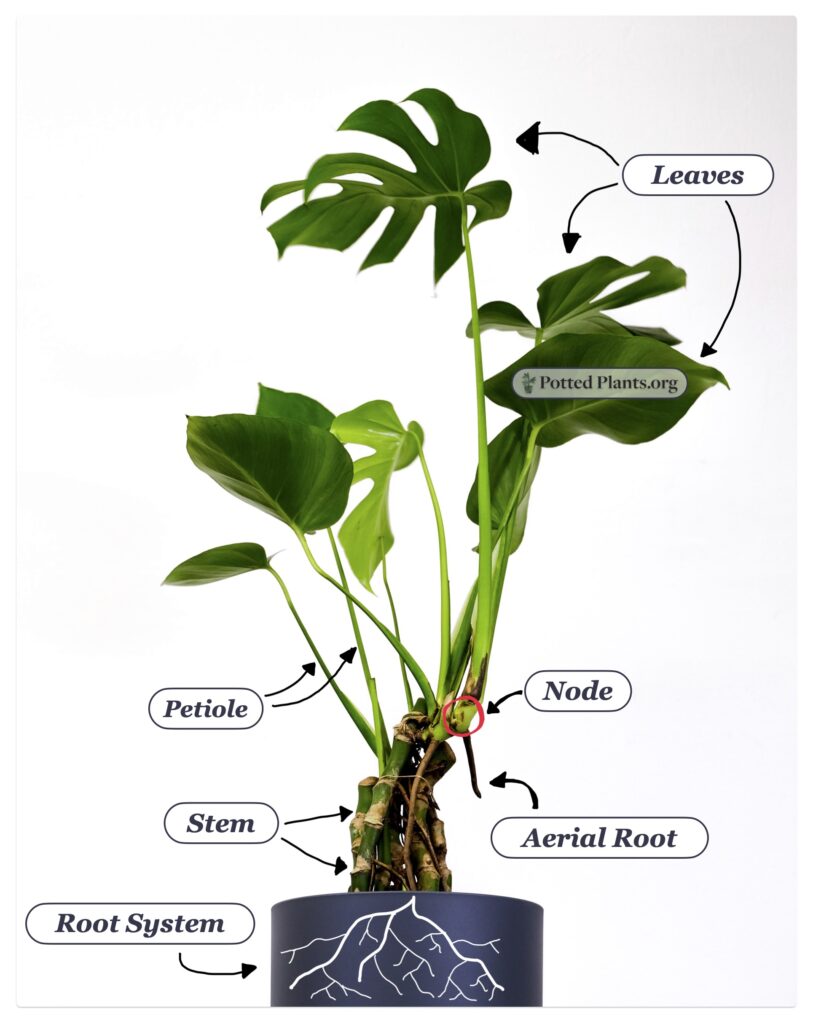
Click the link above for the full deep dive into the different segments that make up these fascinating plants, or dive in below for the summary version:
Monstera Leaves
Let’s start with a plant part that everyone knows and loves. The leaves are the endpoints on Monstera plants, with mature leaves showcasing their signature fenestration patterns with a waxy flat finish. New Monstera leaves start out as delicate lime green growths that thicken and darken over time. You may also notice your leaves sweat, cry, or drip water droplets the morning after a good watering, which is perfectly normal. Monstera leaves need as much indirect sunlight as you can provide if you want your plant to develop complex fenestration patterns.
Monstera Petiole Stems
The petiole is the stem that connects the leaf with the Monstera vine. Unfortunately, many people make the mistake of thinking that cutting at the petiole will guarantee a cutting will root and form a new plant, when this simply isn’t the case. Placing a leaf and it’s petiole segment in a vase of water may lead to a stunning cutting display for a few weeks, but this leaf will eventually die without a chance of forming a new plant.
Another helpful hint about petiole stems: I’ve seen people clipping or attaching petiole stems to moss poles, trellis structures, and other plant segments, thinking this will support the plant. This may lead to nutrients getting cut off from the leaves, leading to decline. Instead, any structural support needs to focus on the vine stem itself, not the petiole offshoots.
Monstera Vine and Node Segments
The vine represents the main, chunky part of your Monstera plant, giving your Monstera it’s overall shape, growing in modular node segments. You may notice defined breaks in your Monstera stem – usually including a small aerial root segment and petiole that branches into a Monstera leaf. These self-contained modular sections are called nodes.
In order to successfully cultivate a new plant, you’ll need to make sure you make a cutting in the vine that includes at least one complete node segment. Including more than one node segment works too, and actually increases your success of the cutting turning into a new healthy plant. In mature plants, nodes may include small nubby aerial roots, or even fully formed root segments. For cuttings, these will become the plant’s main underground root system. While it’s not required to wait for these aerial roots to grow before taking a cutting, slightly developed roots will decrease the time it takes to get the plant ready for planting in its own container.
The Science of Monstera Nodes and Why they Matter
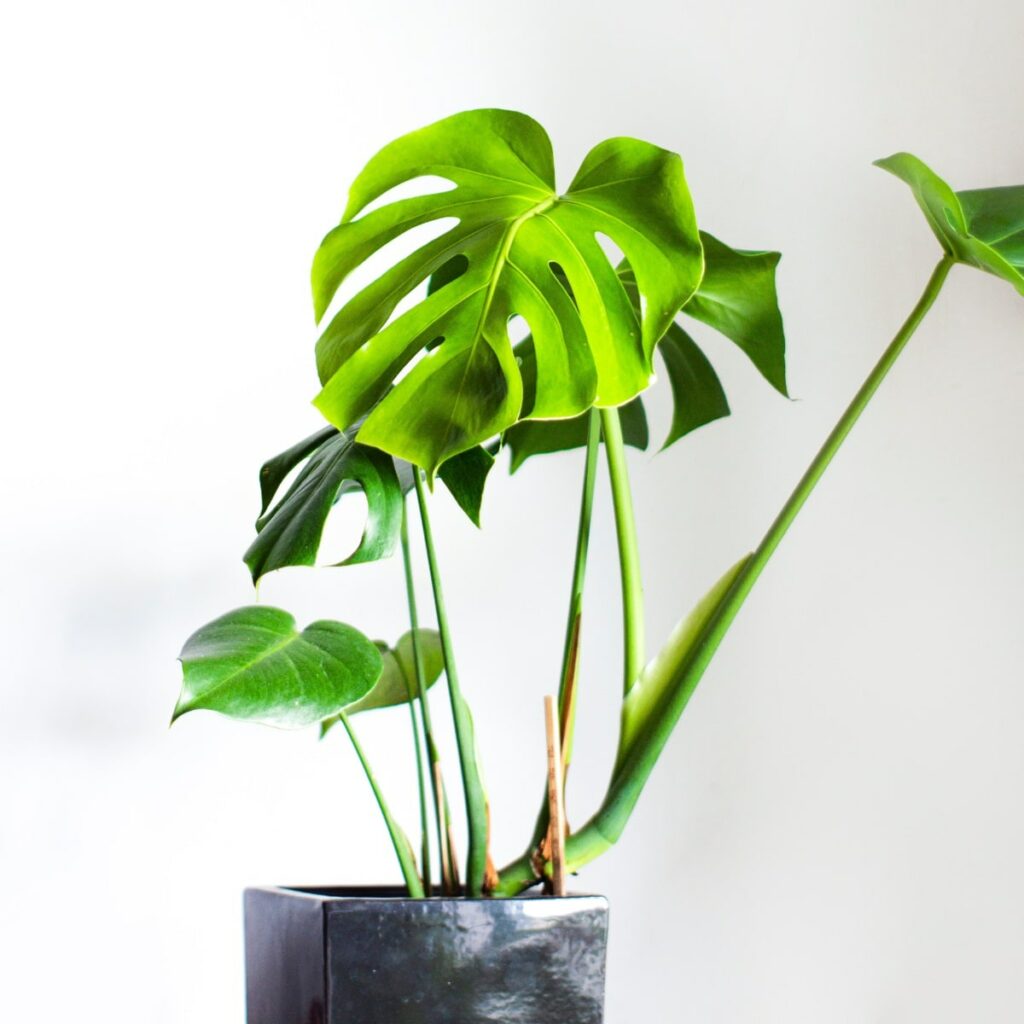
Now, let’s dive into the nitty-gritty details of nodes. Picture this: nodes are those magical points on a plant’s stem where leaves, branches, or even aerial roots decide to make their grand entrance. You can easily spot them as these tiny bumps or swollen areas along the stem. Mind-blowing, right?
Now, let’s talk about why nodes are so darn important in Monstera propagation. These little powerhouses are home to the cells that are absolutely essential for the development of roots and shoots. When you place a node in a suitable environment, it has the potential to sprout into a brand spanking new plant. That’s why we often refer to nodes as the “birthplace” of new growth. It’s like a whole new world of possibilities!
During the propagation process, it’s quite common to snip a stem just below a node and plop it into some water or a suitable growing medium. And guess what? That node is the magical point from which new roots will emerge, providing the plant with the means to slurp up water and nutrients. It’s like a symphony of growth happening right before your eyes!
Now, here’s the deal. Without a node, your chances of successfully propagating a Monstera are about as slim as a toothpick. Nodes are the holy grail, my friends. They contain all the necessary cells and hormones required for root and shoot development, making them absolutely essential for the growth of a new plant. Trying to propagate a Monstera without a node? Well, let’s just say you’ll likely end up with a whole lot of disappointment or a significantly lower success rate. Trust me, you don’t want that.
But hold on, there’s a little twist in this tale. Some plants, including certain Monstera varieties, have a sneaky trick up their sleeves. They can produce these fancy aerial roots that can be used for propagation. These roots have the audacity to emerge from nodes above the soil surface, and with a little encouragement (think high humidity or a moss pole), they can grow and establish themselves in a growing medium. So, you see, it is possible to propagate a Monstera without solely relying on those traditional nodes. Nature always finds a way!
To wrap it all up, nodes are the unsung heroes in the propagation journey of Monstera plants. They hold the key to success, containing all the necessary cells and hormones for root and shoot development. While some plants may have alternative methods of propagation, such as those cheeky aerial roots, nodes remain the primary means of propagating Monstera plants. So, embrace the power of nodes and watch your Monstera flourish like never before!
Exploring Alternative Methods for Propagating Monstera
While it’s not possible to propagate a Monstera without a node, it’s incredibly easy to do so with at least one node segment. For new growers, these Monstera propagation methods may require more patience and experimentation, but they can still lead to successful results.
Monstera Water Propagation
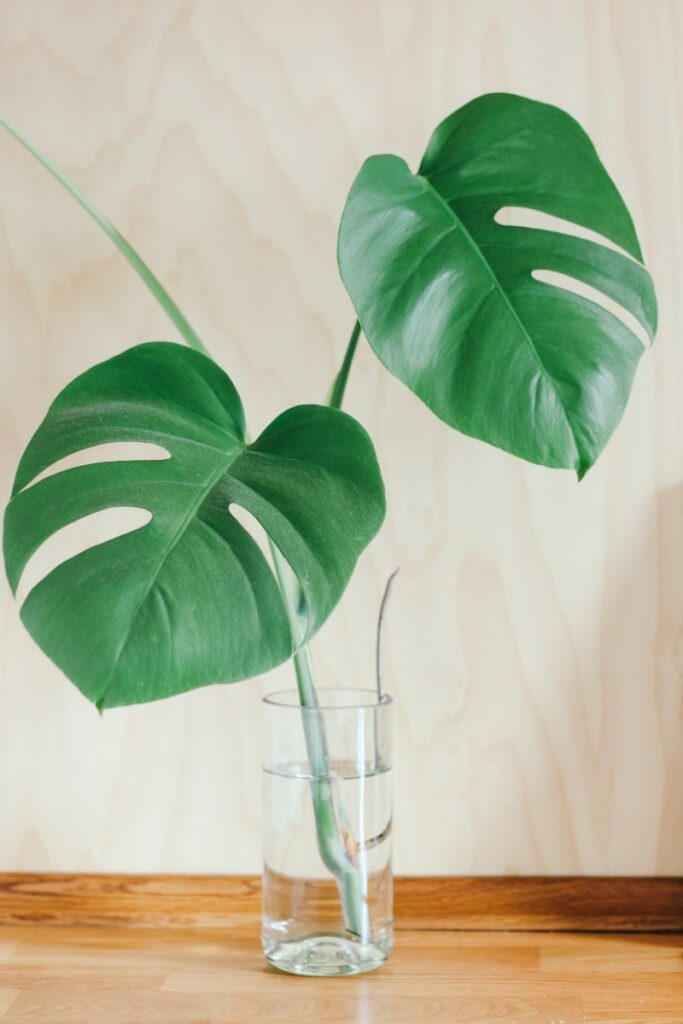
The easiest way to propagate Monsteras with a node segment is water propagation. This involves cutting a healthy stem just below a leaf node and placing it in a container filled with water. It’s crucial to ensure that the node is submerged in the water because that’s where the roots will eventually develop. The container should be kept in a well-lit area, but not directly exposed to sunlight. Changing the water every few days is important to prevent bacterial growth. After a few weeks, roots should start to form. Once the roots are well-established, the cutting can be transferred to a pot with soil.
Air Layering
Another more complex alternative method of propagation is air layering. This technique involves creating a small wound on a healthy stem and then wrapping it with moist sphagnum moss or a rooting hormone. The wound is then covered with plastic wrap to create a humid environment. Over time, roots will begin to develop at the wound site. Once the roots are well-established, the stem can be cut below the rooted area and planted in a pot with soil.
For those who are more experienced or adventurous, tissue culture can be an alternative method for propagating Monstera plants. Tissue culture involves taking a small piece of plant tissue, such as a leaf or stem, and placing it in a sterile nutrient-rich medium. This method requires specialized equipment and knowledge, as it involves creating a sterile environment and carefully monitoring the growth of the tissue. However, tissue culture can yield a large number of plantlets in a relatively short period of time.
It’s important to note that while these alternative methods can be successful, they may not always guarantee the same level of success as propagating with a node. Nodes are naturally occurring points on the plant where new growth can emerge, making them the ideal starting point for propagation. However, for those who are willing to experiment and try something different, these alternative methods can offer a fun and rewarding way to propagate Monstera plants.
Propagate Monstera with Nodes Step by Step
With practice, it’s simple to propagate a Monstera with nodes. To start the process, carefully select a robust stem from the parent plant, ensuring it possesses at least one complete node – although beginners may want to take up to 2-3 node segments to ensure success.
Using clean and sharp pruning shears or scissors, execute a precise cut just below a node. The cutting should measure approximately 3-5 inches in length, guaranteeing the presence of at least one or two nodes.
Once the stem cutting is prepared, it’s time to place the cutting in a glass container of water. Make sure the nodes are submerged, but make sure the petiole stems and leaves aren’t kept underwater. Replace the water weekly, and within a month, your plant should develop roots. Once the root segments develop secondary offshoots, it’s safe to take your Monstera cutting out of the water vase and transfer it into a pot with fresh soil to grow as a new plant.
For the best results with your new plant, maintain the soil’s moisture at a slightly damp level, avoiding both over-saturation and dehydration. Overwatering can precipitate root rot, while underwatering may impede root development. Regularly assess the soil’s moisture content and water accordingly, ensuring that any excess water can freely drain from the pot.
Propagating Monstera through stem cuttings presents an immensely gratifying and cost-effective means of expanding your plant collection or sharing the beauty of this exquisite plant with others. With diligent care and unwavering patience, you’ll relish the joy of witnessing your Monstera flourish and evolve into a mature, resplendent specimen.
Selecting a Healthy Stem Cutting
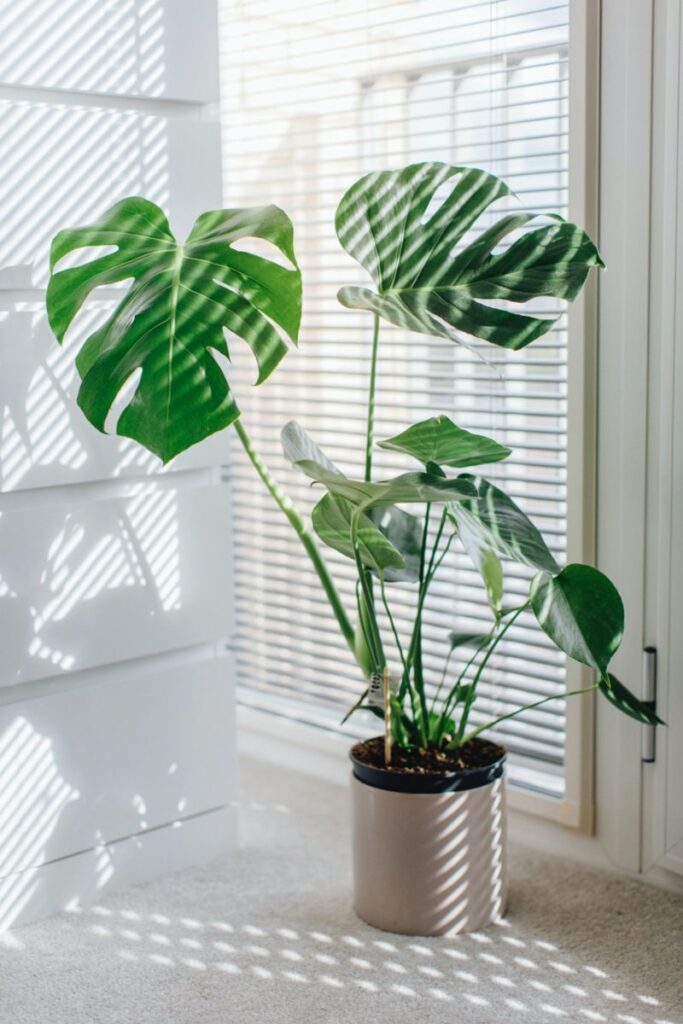
When it comes to the propagation of a Monstera plant, there are various methods to consider. The most common approach involves using a stem cutting with a node. However, there may be instances where access to a node is limited or alternative techniques are desired. In such cases, it is indeed possible to propagate a Monstera without a node by utilizing a healthy stem cutting.
Now, the first step in this process is the selection of a suitable stem cutting for propagation. It is imperative to choose a stem that is mature, firm, and devoid of any indications of disease or damage. A healthy stem will exhibit a vibrant green coloration and possess a relatively substantial thickness, indicating its capacity to sustain new growth.
Take a moment to inspect the stem for the presence of aerial roots, which are small roots that grow along the stem. These roots serve as an excellent indicator of the plant’s potential for successful propagation. The discovery of any aerial roots is a positive sign that the stem cutting possesses the ability to develop into a new plant.
Furthermore, it is essential to ensure that the stem cutting possesses at least one attached leaf. The leaf plays a crucial role in photosynthesis, providing the necessary energy for the cutting to develop roots and grow. A healthy leaf should be fully developed, exhibiting no signs of discoloration, wilting, or pest damage.
Once you have identified a suitable stem cutting, employ a clean and sharp pair of pruning shears or scissors to execute a clean cut just below a leaf node. A leaf node refers to the point where a leaf emerges from the stem. While a node is not an absolute requirement for this method, cutting just below a leaf node can stimulate the development of new roots.
After obtaining the stem cutting, it is advisable to eliminate any leaves that would be submerged in water or soil during the propagation process. This precautionary measure serves to prevent rot and allows the cutting to allocate its energy towards root development rather than sustaining unnecessary foliage.
Always bear in mind that the selection of a healthy stem cutting is of utmost importance for successful propagation without a node. By opting for a mature stem adorned with aerial roots and a healthy leaf, you significantly enhance the likelihood of your Monstera cutting flourishing and evolving into a thriving new plant.
Preparing the Stem Cutting for Propagation
When it comes to the propagation of a Monstera plant, there are various methods that can be employed. The most common way to propagate a Monstera with nodes, growing roots in a glass vase filled with water before transferring the new plant into soil.
To initiate the process, it is imperative to acquire a healthy and mature Monstera plant from which to extract the stem cutting. It is advisable to select a stem that measures at least 6 inches in length and possesses multiple attached leaves. The choice of stem is crucial, as it should not be excessively young or old, as this can have an impact on the success of the propagation endeavor.
Once an appropriate stem has been identified, a clean and sharp pair of pruning shears or scissors should be utilized to execute a clean cut just below a leaf node. A leaf node refers to the point on the stem where a leaf is connected. If feasible, it is recommended to make the cut at a slight angle, as this can augment the surface area available for root development.
Following the cut, any leaves situated near the bottom of the stem should be removed. This precautionary measure serves to prevent the leaves from decomposing when submerged in water or soil. However, it is essential to leave a minimum of two to three leaves at the top of the stem, as these will supply the necessary energy for the cutting to foster root growth.
In the case of water propagation, a clean glass or jar should be filled with filtered water, and the stem cutting should be placed within it. It is crucial to ensure that at least one or two nodes are submerged in the water. The glass or jar should be positioned in an area that receives bright, indirect light, and the water should be changed every few days to prevent the proliferation of bacteria or mold. Over time, the emergence of roots from the nodes should become apparent, and once the roots reach a length of approximately one inch, the cutting can be transferred to a pot containing well-draining soil.
While propagating a Monstera without a node may necessitate additional effort and time, it is undoubtedly feasible. By adhering to the aforementioned steps and providing the stem cutting with optimal conditions, it is possible to successfully propagate a Monstera plant and expand one’s collection.
Creating an Ideal Propagation Environment
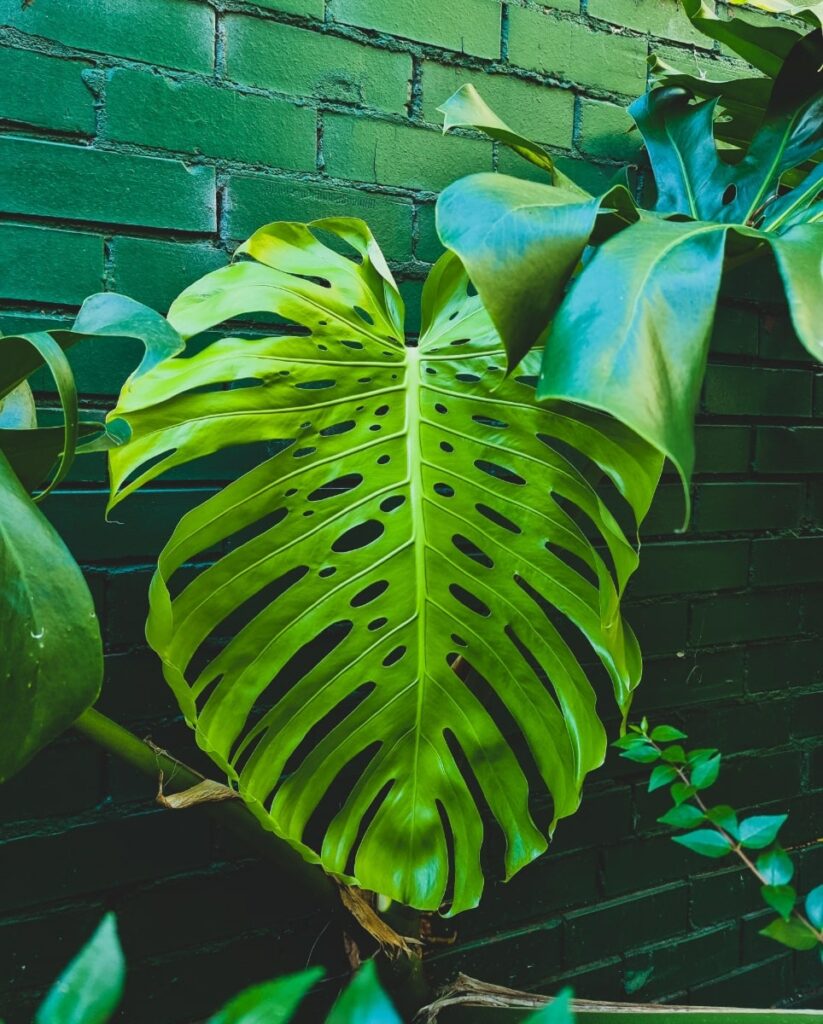
When it comes to the art of propagating a Monstera plant, the presence of a node is an essential requirement. But with a node in hand, it’ll be easy to create a new cutting that grows into a healthy new plant. Here are some quick care tips to consider to help your new plant get off to a great start.
Choosing the Perfect Container
The first step on this journey is to select a container that is not only suitable but also possesses the necessary qualities for growth of your new plant. A small pot works great here as long as it has drainage holes. Monstera plants also don’t mind to be a little cozy, so don’t worry about getting a pot that’s much larger than the plant needs. With the right size, your new cutting will feel right at home for up to 2-3 years before you need to repot your Monstera plant.
The Right Soil and Nutrients
Monstera plants thrive in well-draining soil or a delightful mixture of peat moss and perlite. However, for those who dare to venture into uncharted waters, water itself can be used as a propagation medium. If one chooses to embark on this watery adventure, it is imperative to ensure that the water used is distilled or filtered, for we must avoid any harmful chemicals that may impede the development of those precious roots.
Shedding Light on the Matter
As with most living beings, Monstera plants require an adequate amount of light to grow and propagate successfully. Bright, indirect light is the key to their flourishing existence. Therefore, it is of utmost importance to place the container in a location that receives an ample amount of sunlight. If you are growing Monstera outdoors, exercise caution and avoid exposing the delicate roots to the harsh rays of direct sunlight, for this can lead to irreparable damage.
Indoors, you can give your Monstera as much sunlight as possible. This will ensure your plant has plenty of energy to grow quickly and develop fenestrated leaves as a mature plant. The rule of thumb is to expect fenestration patterns to form after your plant has produced 8 or more leaves. This may vary, and even be faster for larger, more established plants.
The Dance of Temperature and Humidity
Ah, the perfect temperature and humidity, a delicate dance that Monstera plants adore. These magnificent beings prefer warm and humid conditions, so it is our duty to provide them with just that. Aim for a temperature range between 65-85°F (18-29°C), and strive to maintain humidity levels around 60-70%. To increase the humidity, one can engage in the ancient art of misting the leaves regularly or even place a tray of water near the plant, creating a microcosm of moisture.
The Art of Watering and Moisture Control
If one chooses to utilize soil as the propagation medium, it is of utmost importance to ensure that it remains consistently moist, but never waterlogged. The delicate balance between moisture and dryness must be struck, for overwatering can lead to the dreaded root rot. However, for those who dare to venture into the realm of water propagation, changing the water every few days is a must, for stagnation and the growth of harmful bacteria must be avoided at all costs.
The Virtues of Patience and Vigilance
Ah, patience, the virtue that all propagators must possess. While it’s not possible to propagate Monstera plants without nodes, including a node segment is a simple and easy process. Regular monitoring is key, for one must keep a watchful eye for the emergence of new roots or shoots, the telltale signs of a triumphant propagation journey.
While the task of propagating a Monstera plant without a node may seem daunting, fear not, for the creation of an ideal propagation environment can significantly increase the chances of success. Remember to provide the perfect balance of suitable lighting, temperature, humidity, and moisture control, for these elements shall serve as the pillars of support for the growth of those precious new roots and shoots. With meticulous care, unwavering patience, and a touch of luck, one may indeed be able to propagate their beloved Monstera plant, even without the presence of a node.
Wrapping Up: Propagating Monsteras the Right Way

While it may be sad that you can’t propagate a new Monstera cutting without a node, this is a lesson mostly all Monstera fans learn at some point or another. Hopefully, these tips and best practices for taking a healthy node cutting, and the care it needs to develop roots before transferring it into a new pot and ideal conditions will help you grow many Monstera plants in the future.
I think most of the fun and allure about Monsteras is helping grow mature plants, while also taking cuttings to form new plants to gift to friends and family. With any luck, you’ll be cultivating a jungle of Monstera plants in no time at all!
Frequently Asked Questions
Can I propagate a Monstera plant without nodes?
Yes, it is possible to propagate a Monstera without a node. While nodes are the most common method of propagation, Monstera plants can also be propagated through other means such as stem cuttings or air layering.
What is a node and why is it important for propagation?
A node is a small, bumpy area on the stem of a plant where leaves, branches, or roots emerge. It contains the necessary cells for growth and development. Nodes are important for propagation because they have the ability to produce new roots and shoots, allowing the plant to grow and thrive.
How can I propagate a Monstera without nodes?
While you can keep a decorative Monstera leaf with a partial petiole stem alive for several weeks, it sadly will not turn into a new plant. In order to properly propagate a Monstera plant, you will need at least 1-2 nodes in order to develop roots and new growth into a fully formed plant.
Is propagating without a node less successful than using a node?
Propagation without a node can be slightly less successful compared to using a node, as nodes have a higher concentration of growth cells. However, Monstera plants are known for their ability to root easily, so even without a node, you can still have a good chance of successful propagation.
Are there any specific care requirements for Monstera cuttings without nodes?
Monstera cuttings without nodes require similar care to those with nodes. It is important to provide them with adequate moisture, warmth, and indirect light. Keep the soil or water consistently moist but not waterlogged, and provide a warm and humid environment to encourage root development.

